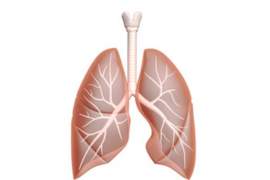
Stage III Mesothelioma

What is Mesothelioma? Mesothelioma is a rare and deadly form of cancer that develops from transforming cells in the protecting lining that covers a number of internal organs of the body (the mesothelium). Mesothelioma cancer is primarily caused by perpetual exposure to asbestos fibers. The majority of people who develop mesothelioma have previously worked in jobs where they are in close contact with asbestos. Mesothelioma commonly develops in the outer lining of the lungs and the internal wall of the chest cavity. Symptoms associated with the disease include: shortness of breath (due to a build-up of fluid between the lungs and the chest wall), heavy coughing and unexplained weight loss. In most cases, diagnosing mesothelioma is extremely difficult. The complexities associated with accurate diagnosis stem from the condition’s slow-developing symptoms. Often, mesothelioma symptoms will remain innocuous for decades following the initial development of the cancer. Similar to other medical conditions, mesothelioma is subcategorized into different stages. As mesothelioma cancer progresses the prognosis becomes dire. Couple this obvious evolution with the fact that the disease is nearly impossible to detect in its early stages and the resulting What is Stage III Mesothelioma? Dissimilar to the preceding two stages of mesothelioma, Stage 3 mesothelioma is deemed as an advanced stage of cancer development. This transition to a more serious cancer greatly affects treatment options. Mesothelioma symptoms at this stage present frequent and sharp pains to the lungs and chest. Unfortunately there are only a few mesothelioma treatment options to mitigate these effects. Because of the lack of treatment and the fact that mesothelioma is not curable, mesothelioma prognosis is not regarded as favorable in its latter stages. Stage 3 mesothelioma is defined by how far the cancerous cells have spread from its original location. In the human body, there is a layer of fatty tissue surrounding the internal organs known as the visceral lining or mesothelium. This protective lawyer between the surface of the chest cavity and internal lungs provides a lubricated blockade to protect against infection. When cancer develops in the mesothelium, it is known as mesothelioma and when this cancer affects the lungs it is referred to as pleural mesothelioma. Oncologists utilize three different staging systems to detail the progression of pleural mesothelioma. Two of these models, the Butchart and the Brigham are employed to describe the stages in a general sense. Because of their generalities, these two models are limited with regards to developing treatment plans. The third system, the TNM (Tumor, Nodes Metastasis) model is far more precise and preferred among medical professionals. When pleural mesothelioma reaches stage 3 it is inoperable. At this time treatments may only prolong the patient’s survival or mitigate the severity of the symptoms. Stage III Mesothelioma requires radiation or chemo treatments. The main problem associated with mesothelioma is that the disease is nearly impossible to diagnose. Because symptoms don’t appear till the disease reaches stage III, survival rates associated with Stage III mesothelioma are far from encouraging. Under the Butchart model, stage III mesothelioma spreads from the origin point to other regions in the body. Impacting of the lymph nodes is almost forgone at stage III mesothelioma. Pleural mesothelioma Stage III according to the Brigham model is categorized as inoperable. At this point, the cancer has spread to the entire chest cavity and malignant cells take root in locations where medical professional cannot safely operate. Simply too many tissues and vital organs are affected during Stage III mesothelioma. Additionally, Stage III mesothelioma under the Brigham model accounts for an impact of the lymph nodes. 10 subcategories exist, in two of the three subsections of the TNM model. These are TO-4 which classifies the size of the associated tumor and NO-4 which explains to the oncologist whether or not the lymph nodes are severely impacted. The metastasis category is comprised of only two subcategories which describe the significance of the spreading. According to the TNM model, stage III pleural mesothelioma affects the lymph nodes but no other vital organs of the body. That being said, Stage III mesothelioma under the TNM model is still regarded as inoperable. Treatment options frequently involve radiation treatments and chemotherapy. Mesothelioma Symptoms: Stage 3 Mesothelioma When mesothelioma progresses to stage 3, common symptoms will affect breathing and cause severe pain. Stage 3 patients will experience severe coughing and shortness of breath.



















